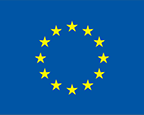Arctic Ocean vs Baltic Sea
The Baltic Sea is located in the transition zone between continental and maritime climates and is one of the largest brackish waters in the world. It is recognized to be a sensitive and unique ecosystem which, like the Arctic, is vulnerable to climate change-induced effects.
Impact of climate change on POPs in the Arctic and the Baltic Sea region
In order to assess the climate change-induced effects, three IPCC climate change scenarios were adopted in the study, i.e., the A2, B2 and Baseline (BL) scenarios. The A2 and B2 climate scenarios represent high and low CO2 emissions, respectively, in the future, and the BL scenario represents the prevailing conditions, i.e., the current-day status of CO2 emissions. The POPCYCLING-Baltic model used in this study is a fugacity-based dynamic model for predicting the fate and transport of POPs in the Baltic region (Wania et al., 2000), see picture below.

The model was applied for an assessment of all hypothetical POPs with partitioning properties falling into −4 < log KAW < 11, 0 < log KOA < 15, and −2 < log KOW < 10. The model results suggest that the environmental levels of POPs in the Baltic Sea region are more sensitive to temperature than to particulate organic carbon (POC) and precipitation and least sensitive to wind speed. The model results furthermore suggests that the effects of individual parameters are not additive, as a cancelling effect can be noticed when all four parameters were assessed at the same time.
The results obtained with the use of the POPCYCLING Baltic model suggest:
- Climate change can lead to changes (increases and/or decreases) in the environmental concentrations of POPs in the Baltic Sea region relative to the current baseline climate. The increasing factors can be up to 2.8, and the decreasing factors can be 1.8 under a more extreme IPCC climate scenario (A2).
- Temperature is the most influential of the four climate-related parameters tested here.
- Emission mode is important for accurately assessing the climate change-induced effects.
- The results compare well with a recently conducted study focused on the Arctic region.
- This approach assumes a steady-state emission of POPs and does not account for the anticipated decline in concentrations of many POPs in coming decades.
Comparison of modelled global climate change impacts in the Arctic and the Baltic Sea region
- A comparison between model predictions for the Arctic and for the Baltic Sea was performed. Global climate change may intensify the volatilization of p,p’-DDT from both the Arctic and Baltic Sea waters. However, global climate change may play an additional role for the Arctic region by redistribute more p,p’-DDT to the Arctic region via either single- or multi-hopping effects (Semeena and Lammel, 2005).
- All model results suggest increased atmospheric concentrations of POPs in the two regions. These increases (a factor of 1.8) are mainly due to intensified volatilization from surface compartments. The POPCYCLING-Baltic and DEHM (applied to the Arctic) models also predict decreased seawater concentrations of highly chlorinated PCBs, such as PCB-180 and PCB-194 in the two regions because of increased adsorption to POC and deposition to the sediment.
- Model predictions suggest either an increase or a decrease in the atmospheric concentrations of three HCHs as a result of global climate change, depending on the model and its settings and chosen scenario. The factor of increase or decrease is up to 2.0. However, global climate change seems to play a similar role in the Arctic and in the Baltic Sea region with respect to the HCHs studied. In the Baltic Sea region, the long-term steady-state concentrations of the three HCHs in coastal and open-ocean water in the Baltic Sea are predicted always to decrease regardless of emission mode. In contrast, the atmospheric concentrations of the three HCHs will be increased due to climate change (except when β-HCH was emitted to air; in this case, its concentration was predicted to decrease in the Baltic atmosphere).
- Results of the modelling suggested that changes in ocean circulation in the Arctic Ocean had caused changes in the surface seawater concentrations of PFOA. A recent study has suggested that atmospheric deposition together with riverine inflow could be major sources of PFOA and PFOS to the Baltic Sea region in comparison with the inputs from wastewater treatment plants. It has been hypothesized that this net input was due to the release of PFOA and PFOS previously retained in the soil and groundwater of the watershed (Filipovic et al., 2013). Based on that study, it could be hypothesized that climate change may lead to greater transport (from e.g. soil and ground water runoff in the catchment area) of PFOA and PFOS to the Baltic Sea.





















